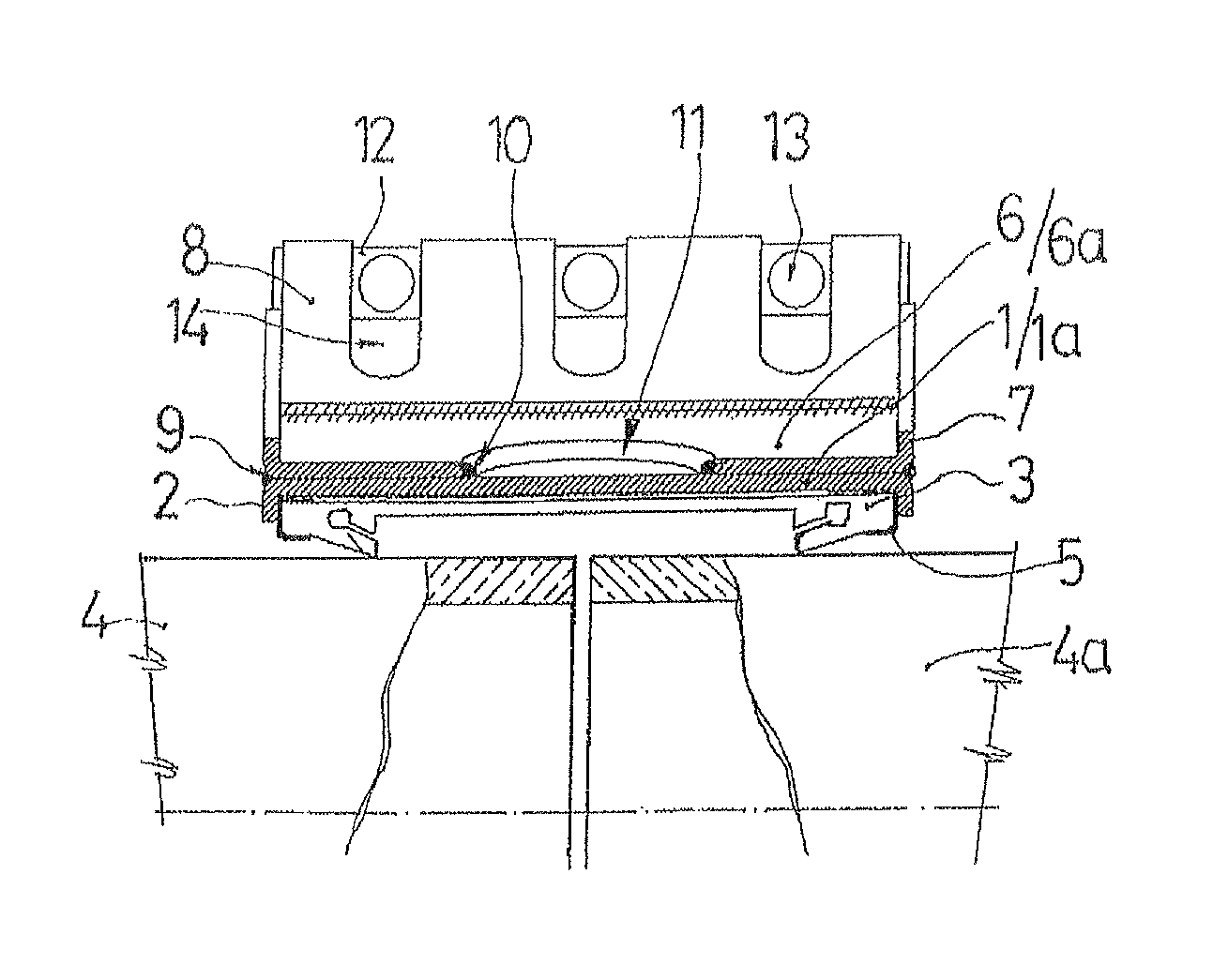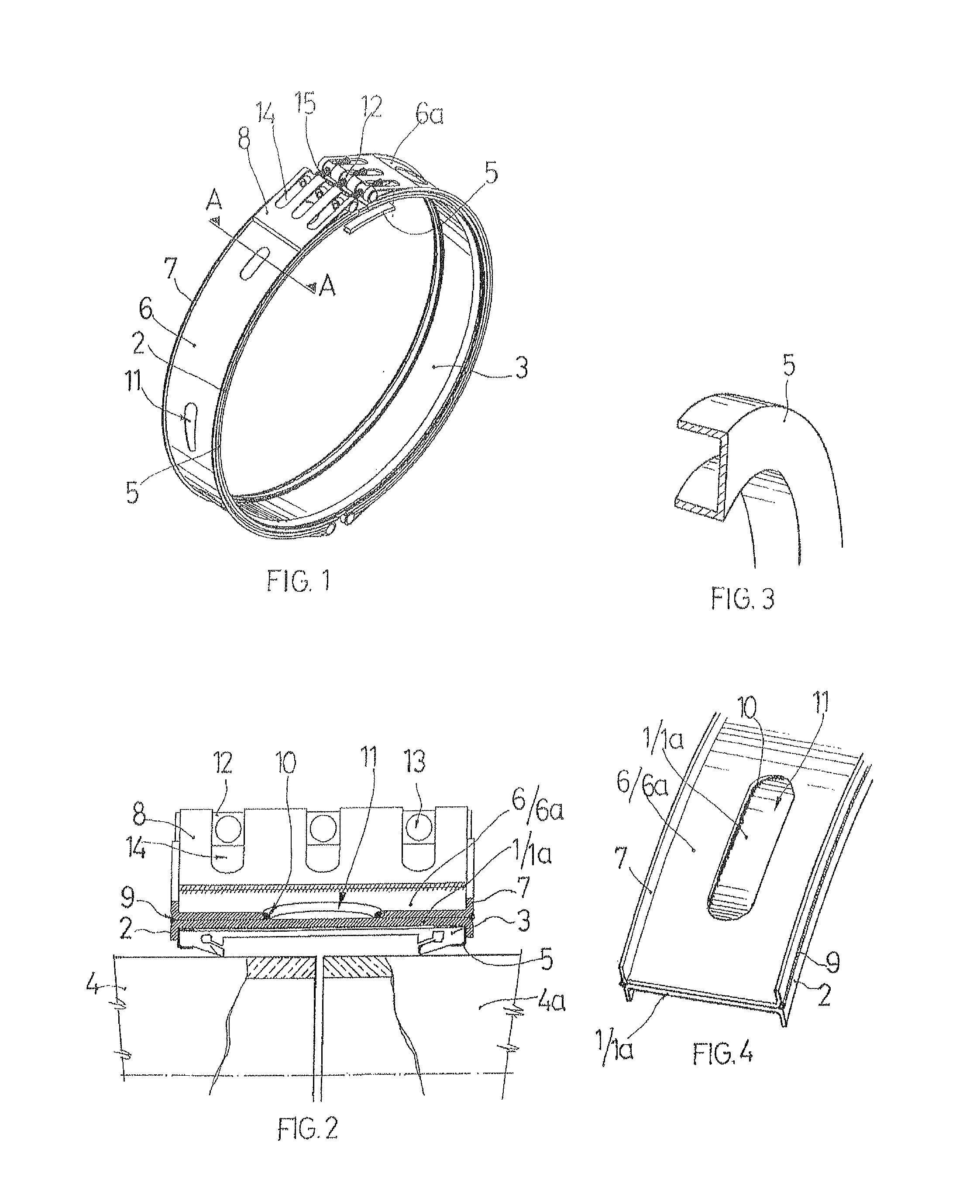Splicing ring for tubular high-pressure fluid conduits
a technology of fluid conduit and splicing ring, which is applied in the direction of fluid pressure sealed joints, joints with sealing surfaces, sleeve/socket joints, etc., can solve the problems of limited security, excessive deterioration, and offer a total guarantee of stability, so as to avoid deterioration.
- Summary
- Abstract
- Description
- Claims
- Application Information
AI Technical Summary
Benefits of technology
Problems solved by technology
Method used
Image
Examples
Embodiment Construction
[0019]In accordance with the aforementioned drawings, the splicing ring for tubular conduits destined for conveying high-pressure fluids, liquids or gases, consists of a metal band, formed in the example represented by two independent and identical halves or bands —1— and —1a—, the side edges —2— of which are folded downwards in a right angle, constituting the edges that retain the relevant O-ring —3— in position. Said O-ring —3— has a known, characteristic and adequate profile for ensuring a hermetic seal in the splicing area of the two opposing tubular conduits —4— and —4a—.
[0020]The edges of the O-ring —3— are advantageously covered throughout their outer perimeter by two protective metal bands —5— preformed into a U shape to adapt and fully adjust to said perimeter edges of the O-ring —3—, offering full protection to the aforementioned edges and preventing deterioration thereof.
[0021]The splicing ring is completed by a second outer band, manufactured from the same material as t...
PUM
 Login to View More
Login to View More Abstract
Description
Claims
Application Information
 Login to View More
Login to View More - R&D
- Intellectual Property
- Life Sciences
- Materials
- Tech Scout
- Unparalleled Data Quality
- Higher Quality Content
- 60% Fewer Hallucinations
Browse by: Latest US Patents, China's latest patents, Technical Efficacy Thesaurus, Application Domain, Technology Topic, Popular Technical Reports.
© 2025 PatSnap. All rights reserved.Legal|Privacy policy|Modern Slavery Act Transparency Statement|Sitemap|About US| Contact US: help@patsnap.com


